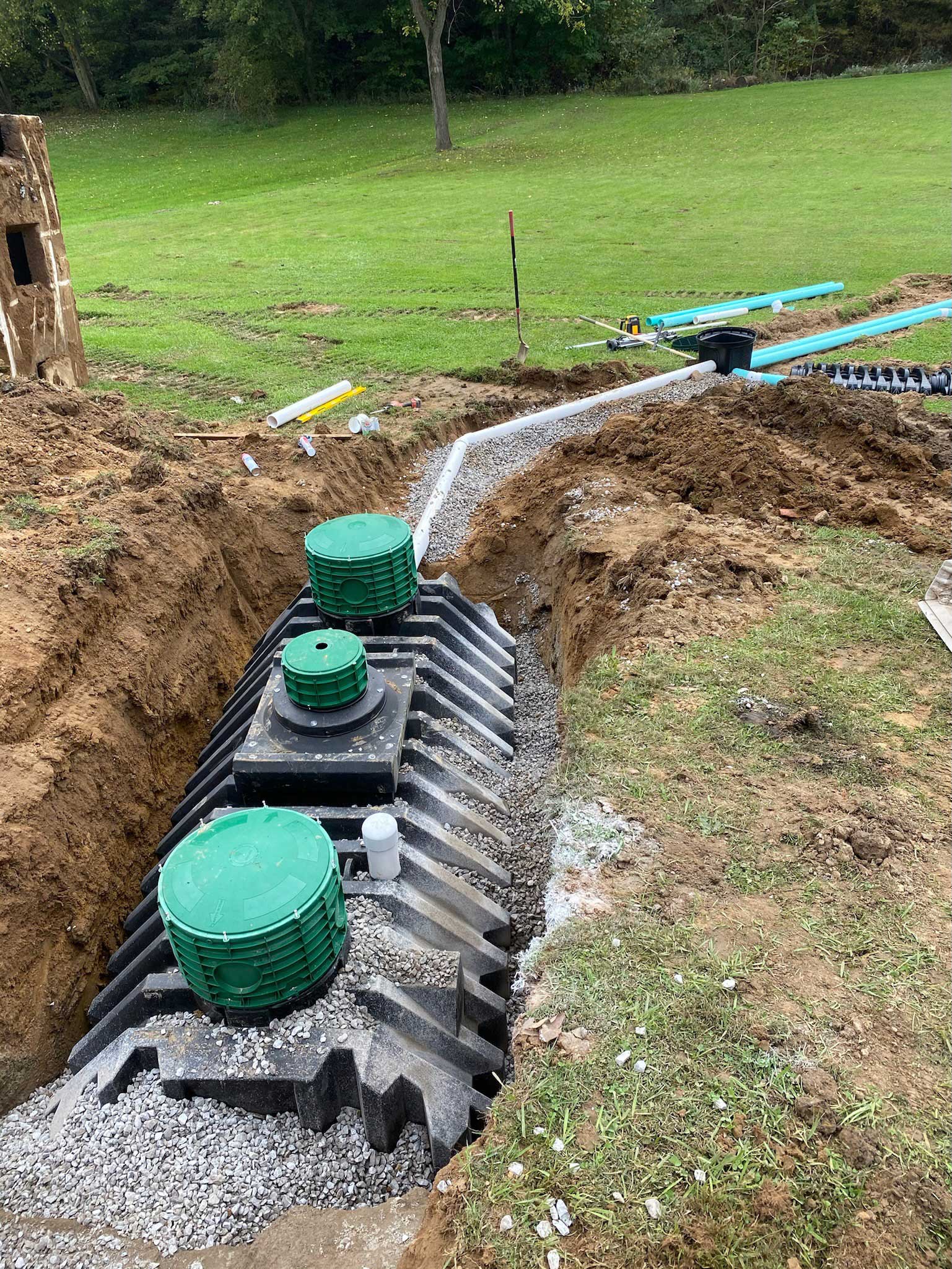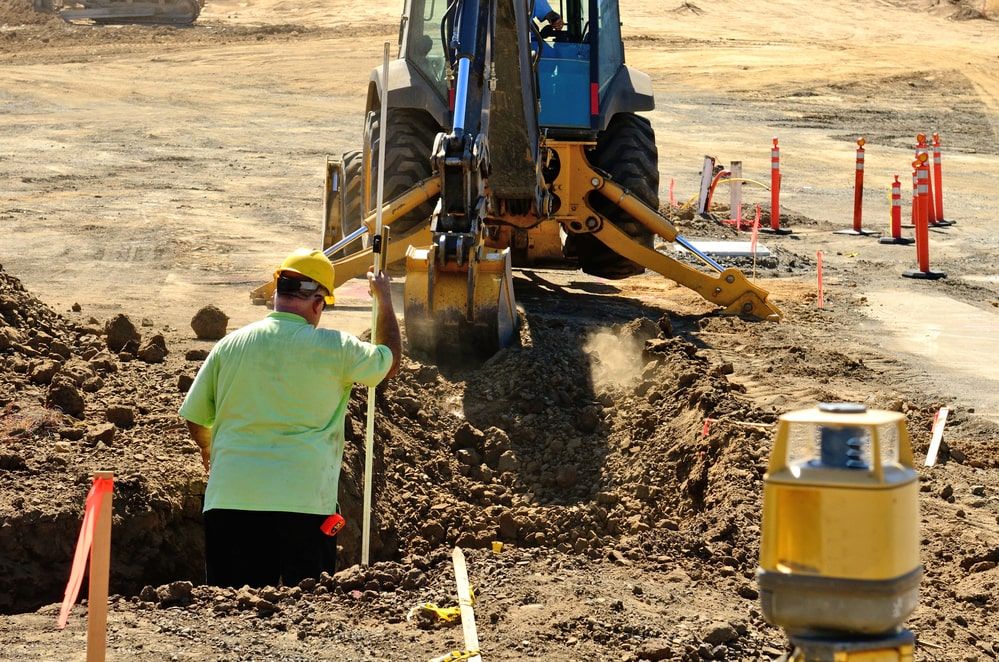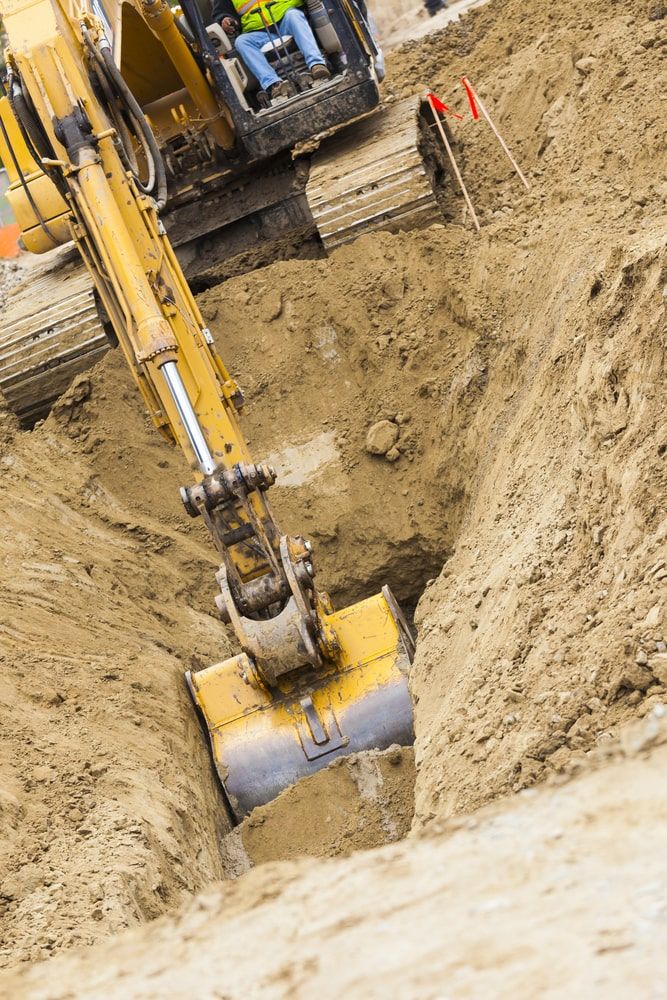Lancaster Excavation - Specialist Excavation Services in Lancaster, OH
Wiki Article
Thorough Expedition: The Scientific Research Behind Superior Excavation Practices
From ancient hand tools to modern-day hydraulic excavators, the advancement of excavation strategies has been a testament to human resourcefulness and technical developments. What really establishes premium excavation methods apart is a deep understanding of geological principles, paired with the use of innovative tools and methodologies.Advancement of Excavation Methods
Throughout history, the advancement of excavation methods has played a crucial duty in progressing construction techniques and historical discoveries. From the rudimentary devices made use of by our ancestors to the innovative equipment employed in contemporary times, the progression of excavation techniques has dramatically transformed just how we come close to different jobs.In old times, manual work with basic devices such as shovels, wheelbarrows, and pickaxes was the key technique of excavation. This labor-intensive procedure limited the deepness and extent of excavations, typically causing slow development and limited access to specific websites. However, as people progressed, so did the devices and strategies utilized for excavation.
The Industrial Transformation noted a transforming factor in excavation methods with the introduction of steam-powered machinery. In contemporary times, innovation plays a critical function in excavation, with improvements like General practitioner systems, drones, and 3D scanning improving precision and effectiveness in the field.
Role of Technology in Excavation

The integration of innovative innovation has actually essentially changed the field of excavation, boosting precision and effectiveness to unprecedented levels - lancaster trenching. One of the vital technological innovations that has considerably influenced excavation techniques is the utilization of General practitioner systems.
Furthermore, the advent of 3D modeling and simulation software application has structured the planning procedure for excavation tasks. Operators and designers can currently visualize the entire excavation process before damaging ground, enhancing and recognizing possible challenges workflow. Along with this, the application of drones in excavation tasks has actually promoted airborne studies, volumetric measurements, and website inspections with unrivaled speed and accuracy.
Geological Principles in Excavation
An understanding of geological concepts is necessary for making certain the architectural honesty and security of excavation websites. Geological variables play a crucial role in determining the feasibility and safety of excavation projects (lancaster trenching). One crucial geological principle to think about is the sort of soil or rock existing at the website. Different soil types, such as sand, clay, or crushed rock, have differing degrees of stability and require different excavation strategies. Natural soils like clay may call for extra support to prevent collapses, while sandy dirts may be prone to disintegration during excavation.Additionally, the geological framework of the area, consisting of faults, fractures, and rock developments, should be meticulously examined to identify possible risks and obstacles. Excavating near geological fault or unsteady rock developments can result in instability and possible risks. By performing complete geological surveys and evaluation, excavators and designers can create methods to mitigate dangers and ensure the successful conclusion of excavation projects. Eventually, including geological principles right into excavation techniques is vital for achieving secure, reliable, and lasting outcomes.

Most Recent Tools for Excavation
In the realm of excavation practices, contemporary innovations in devices have actually changed the performance and precision of excavation processes. One of the most up to date devices making waves in the market is making use of drones geared up with advanced imaging modern technology. These drones can give thorough aerial surveys of excavation websites, using real-time data on topography and potential threats. This details aids in better preparation and decision-making throughout the excavation process.An additional cutting-edge tool obtaining appeal is the implementation of 3D printing modern technology for producing custom excavation tools. This enables the manufacturing of specialized tools that are customized to the particular requirements of a task, enhancing performance and decreasing downtime.
In addition, improvements in materials science have actually resulted in the growth of stronger and a lot more durable excavation tools. lancaster trenching. Tungsten carbide-tipped excavator add-ons, for instance, deal superior performance in tough ground conditions, improving performance on-site
Science's Effect on Excavation Practices

Additionally, advancements in products science have actually led to the creation of more powerful, extra sturdy excavation devices and tools. The usage of composite products in diggers and shovels has enhanced their efficiency and long life, eventually enhancing efficiency on excavation websites. Additionally, clinical research on dirt mechanics and geotechnical design has provided important understandings into soil actions, permitting excavation professionals to make enlightened decisions relating to excavation approaches and soil stabilization strategies. Overall, science remains to drive innovation and enhancement in excavation techniques, making excavation projects much more effective, cost-effective, and sustainable.

Conclusion
Finally, the advancement of excavation methods has been greatly affected by innovations in innovation and a deeper understanding of geological principles. The most up to date devices and devices made use of in excavation have actually improved performance and precision in the field. The application of clinical knowledge has actually substantially enhanced excavation techniques, resulting in more lasting and effective approaches for excavating numerous kinds of products.In the world of excavation techniques, contemporary developments in tools have actually changed the effectiveness and precision of excavation processes. By leveraging clinical principles, the excavation industry has actually been able to substantially enhance efficiency, precision, and security in excavation processes. GPR permits excavation groups to non-invasively scan and map subsurface frameworks, energies, and potential threats, allowing them to plan excavation tasks with higher precision and lowered danger of accidents.
In addition, scientific study on dirt mechanics and geotechnical design has given important understandings right into dirt habits, allowing excavation experts to make informed choices concerning excavation approaches and soil stablizing techniques. On the whole, science proceeds to drive innovation and renovation in excavation practices, making excavation jobs more effective, cost-effective, and lasting.
Report this wiki page